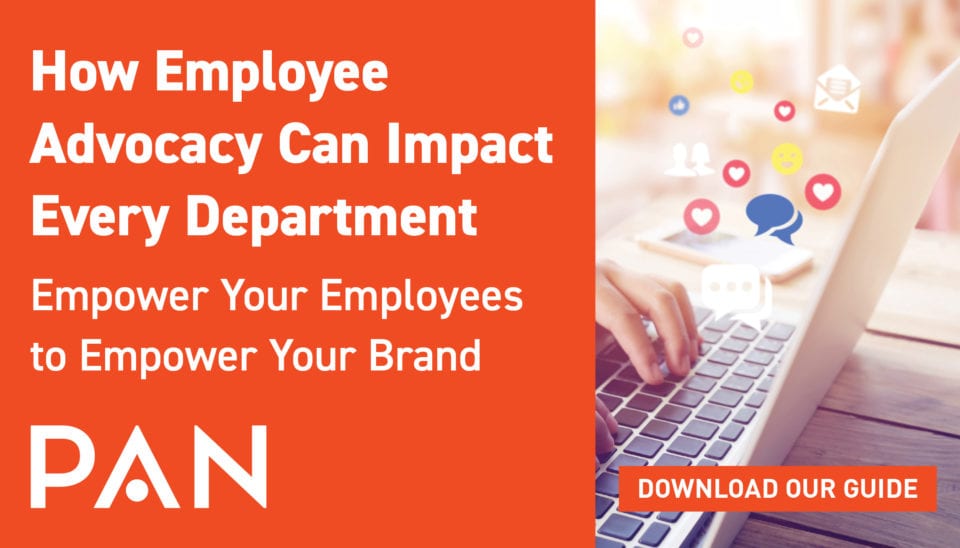Any modern, thriving company understands that the voice of the customer (VoC) is critical for developing more impactful experiences. Even the brands that have been impacted by the recent economic downturn should be looking to their customers as a way to recover.
However, it’s not the only voice that you should prioritize. The voice of your employee matters significantly, as well. Their feedback is extremely valuable in serving the VoC and in addressing new challenges of today. While implementing and establishing a VoC is essential, augmenting it with what your employees have to say can make it even more powerful.
Why You Should Build a Voice of the Employee Program
How do you know what your employees really think? Are you certain that employee engagement is trending up and not down? The fact is your employees are your most valuable assets. Employee ideas can drive business growth— in fact, employee programs can help deliver up to 48% larger deals. That’s because they usually understand customer needs better and what it takes to meet them.
You shouldn’t stifle employee innovation and ideation. Develop a culture that flourishes because of these factors. To execute this well, you need a voice of the employee program.
Struggling to connect with your team while you work from home? Here are some employee engagement tips: How to Boost Employee Engagement in a Remote Workforce
How to Build a Voice of the Employee Program
You may just be beginning to worry about employee engagement and its impact on your business, especially given the current climate and remote workforce challenges. Maybe, you do annual surveys to understand if your employees are satisfied and what they think of your company culture. The problem with this approach is that it’s retroactive and doesn’t provide you with the full picture.
Instead, it’s best to get feedback at the moment, something you may already be doing with customer surveys. Initiate employee surveys during various touchpoints that coincide with the customer journey to dig deeper into how the process could be better.
For example, most technology or software companies have an implementation team. That team is responsible for project management and onboarding. They have critical insights into if the processes in place are successful and where they come up short. Ask for specific feedback around these touchpoints and you can then make improvements.
Beyond surveys, there are other ways to establish and sustain a voice of the employee program. Foster an environment where you encourage feedback from employees about the customer experience. Most employee engagement surveys focus on internal subjects, which is necessary, but developing a program that allows employees to feel heard about how you are serving the customer matters just as much.

Here are some steps you can take to ensure your voice of the employee program impacts the VoC:
- Start with a strategy: As with any initiative, it’s important to start with a strategy of why employee feedback matters, how you’ll get it, and what you’ll do with it.
- Define how you’ll gather insights: As noted, we’ve talked about touchpoint surveys and opening dialogues. Find the best way to roll out, manage, and scale surveys as well as channels to support continuous feedback, such as having a Slack channel dedicated to this or a central hub for honest feedback.
- Design your questions: Most employee surveys include ranges, but that doesn’t give you much context. Instead, opt for more open-ended questions that get to the root of frustrations your employees and customers may have. In the example above about implementation, you could ask them team-specific questions about where the gaps are in communication. You may find that the implementation phase is riddled with ambiguity and questions, leading you to develop an implementation guide with the help of your team that brings clarity to the process and sets expectations.
- Measurement: As surveys and feedback will be ongoing, you’ll need a platform that can measure and track the data. From this data, you should be able to decipher actionable insights that can improve the lives of your employees and customers.
Voice of Employee Programs Can Also Build Brand Advocates
When your employees feel heard and know that their opinions are wanted and encouraged, they’ll typically become more engaged and more loyal. When your employees see that their feedback matters and impacts change, they’ll soon be able to play a role in advocacy marketing.
Employee advocacy makes your brand stronger. They’ll want to share your content on social media and show their passion for what you do as a company. Their interactions with customers will become invigorated because they are excited about how they can solve customer problems.
To run parallel with your voice of the employee program, creating an employee advocacy plan is essential. Educate your staff on how and why they should advocate for your company on social media or other channels. Provide them with guidelines and best practices as well so that everyone is on the same page.
I will say it’s pretty difficult to build employee brand advocates without a voice of the employee program. Until employees feel they are valued and that their input is helping to shape the company’s vision, they are unlikely to be all in.
But when they do, your culture becomes one of inclusivity and is sure to affect employee turnover positively. Just as important, these insights can completely reimagine the customer experience.
To learn more about the ROI of employee programs, download “How Employee Advocacy Can Impact Every Department.”
Voice of the Employee Nurtures Voice of the Customer
Now that you have insights and feedback about the real interactions between your business and customers, you have the power to inspire change. As we align strategies in the recovery phase of this pandemic, it is these types of insights that will bring your brand back onto its feet after a few vulnerable months.
While it mainly impacts customer-facing roles, voice of the employee’s impact on VoC is really enterprise-wide. You’ll have a whole new understanding of your customer’s journey and what’s not working. You may even learn more about the post-Covid journey for your customers and how it will impact your sales cycle. By collaborating with those that know the challenges best, your company can hone in on these areas to develop better experiences.
Employee-driven information is a goldmine when you know how to ask for it and use it. It’s not an easy transformation but one well worth the work. If you want to engage employees and customers more purposefully, we can help. Get in touch to learn what PAN can offer.




